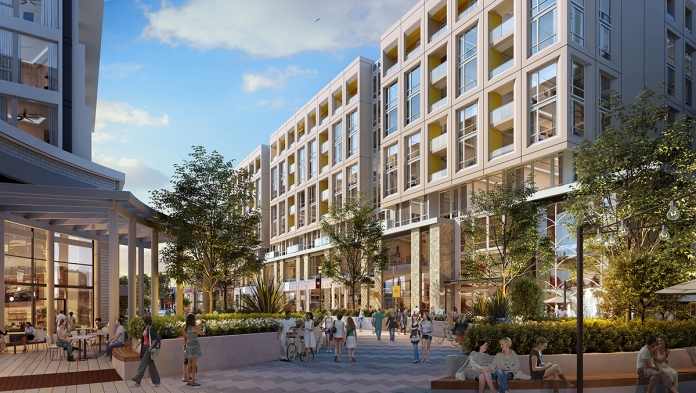Millions of Americans are losing out on the chance to reap the benefits of homeownership because of a supply shortage. This shortage is most acute among affordable homes, where low- and moderate-income renters, younger first-time homebuyers, and people of color are losing faith that they will be able to experience this part of the American dream.
We must do better. The US is in need of roughly 3.8 million to 5.5 million housing units. Building more homes for low- and moderate-income families and first-time homebuyers, and equipping these families with reliable and affordable financing tools so they can compete to buy these homes, is essential if we’re to solve the nation’s affordable homeownership crisis.
In many respects, this crisis was born during the Great Recession. The per-capita rate of new production of single-family homes plummeted in the mid-2000s and has remained at about half that of the preceding four decades. This deficit quietly accumulated even as Millennials, who initially delayed homeownership in the aftermath of the financial crisis, began to enter the market.
Then came Covid-19. Low interest rates and quarantines stoked housing demand while labor and materials shortages and supply chain challenges slowed construction and increased costs. Land prices and development costs are also rising in many parts of the country. The result is an environment in which developers are discouraged from building smaller, more affordable homes in favor of high-end homes that can absorb these increased costs while still returning a profit. Meanwhile, many existing home sellers are flooded with generous cash offers, often from investors, and are discouraged from accepting offers from typical first-time buyers who need more time to arrange for and obtain a mortgage.
Past experiences can provide valuable lessons about how to address this crisis. After World War II, the federal government, recognizing “an unprecedented emergency shortage of housing,” made a number of moves, including limiting non-residential construction, removing import tariffs on lumber for building houses, and requiring allocation of building supplies for housing production for a period of time. At the same time, the government enabled families to buy homes with low-down payment, fixed rate, long-term amortizing mortgages facilitated by government guarantees, spurring the demand for new construction of such homes.
From 1950 to 1959, an estimated 15 million new homes were built and the homeownership rate rose from 43.6% in 1940 to 61.9% in 1960.
The strategy was flawed, however, because the homes and the beneficial financing were largely restricted to White households. Layers of federal and local policies effectively excluded people of color from the opportunity to become homeowners, inequities that have greatly contributed to our current racial homeownership gap. Today, 72% of White households own their home, as compared to 42% of Black households, 48% of Hispanic households and 58% of Asian American and Pacific Islander households.
This is unacceptable. The government was correct to treat the housing shortage as an emergency after WWII, and we must rekindle that same urgency today. But we must also consider who we are building homes for.
Here are a few ways that we can begin to address the housing shortage:
Incentivize new construction of affordable homes
Financial incentives can encourage builders to build new homes that are within reach for many first-time buyers. Possible incentives run the gamut, from federal supports and subsidies, to better terms on construction lending, to fewer local regulations and restrictions that significantly add to building costs.
Lift condo lending restrictions
Construction of condominiums, which are a potential stepping stone for first-time buyers, is at record lows. State- and local government- and federal government-sponsored agencies’ restrictions on condo lending presents a big barrier to first-time buyers who need a loan, and in turn to the development of for-sale condominiums.
Focus on manufactured housing
Manufactured, modular, panelized and precut homes are a key piece of the puzzle. Built entirely or partially in factories and assembled on site, these various forms of prefabricated dwellings are an attractive solution because they cost less to produce than homes built on-site.
Before 1995, roughly 240,000 manufactured homes shipped annually, compared to less than 100,000 annually now. Similarly, modular, panelized and precut homes constituted 7% of new single-family homes in the 1990s compared to just 3% today. The Urban Institute estimates we could add 200,000 units of new, affordable housing annually by increasing production in these areas. Expanded zoning and building code flexibilities can help spur the creation of manufactured housing.
Improve financing for existing homes
Within our existing housing stock are millions of affordable but older homes that need repair. Many people in the market for an affordable home can’t just buy a house and repair it because of the way mortgage financing works. Most lenders will only lend against the property’s current value, which does not allow enough for the needed repairs. As a result, a potential homebuyer may lose the chance to buy the home to investors and corporations that can afford to buy homes in bulk, finance the repairs, and then rent out the property, prohibiting the property from returning to the market as an affordable home for purchase.

































